Creating your own greenhouse is like opening a door to endless gardening possibilities, whether you’re a novice planting your first seeds or a seasoned gardener seeking new challenges. This endeavor not only extends your growing season but also provides a nurturing sanctuary for your plants, shielding them from harsh weather and pests. Imagine walking into a space brimming with lush greenery and thriving blooms, even when the world outside is frosty and gray. A greenhouse becomes your personal oasis, enabling you to grow a diverse array of plants that might otherwise struggle in your climate.
In this article, we will guide you through the essentials of constructing your very own greenhouse, tailored to fit your gardening aspirations and available space. You’ll learn about the different types of greenhouses you can build, from simple DIY designs to more elaborate structures, and how to choose the right materials that ensure durability and efficiency. For beginners, we’ll break down the basics into manageable steps, empowering you with the confidence to embark on this rewarding project. Experienced gardeners will find advanced tips and creative ideas to optimize their existing setups, enhancing both productivity and enjoyment.
Together, let’s explore how to turn your backyard into a year-round garden paradise. With a little creativity and effort, your greenhouse can become a cornerstone of your gardening journey, offering both a practical solution and a source of immense personal satisfaction. Get ready to transform your gardening experience, cultivating a thriving ecosystem that reflects your passion and care. Whether you dream of fresh vegetables in winter or a vibrant collection of exotic plants, building your own greenhouse can make those dreams a reality.
Select a Suitable Location
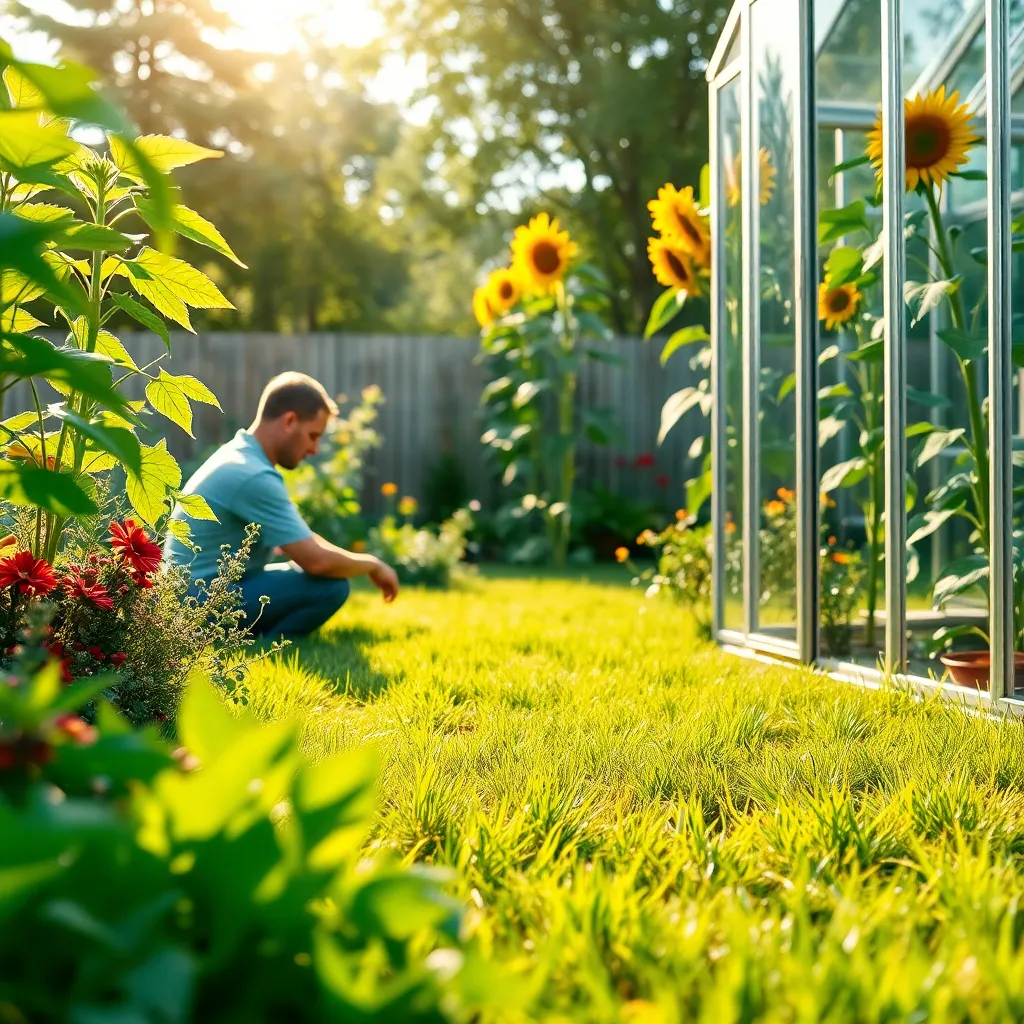
Choosing the right location for your greenhouse is crucial for its success. Ideally, you should place it in an area that receives ample sunlight, preferably at least six hours of direct light each day, to ensure optimal plant growth.
If you’re in a region with extreme weather conditions, positioning your greenhouse east to west can help maximize sunlight exposure. This orientation allows for even heating and cooling throughout the day, which is beneficial for maintaining a stable internal environment.
Consider the proximity to utilities such as water and electricity, which are essential for maintaining a healthy greenhouse. Having easy access to these resources will simplify tasks like watering plants and operating any necessary heating or cooling systems.
For beginners, it is advisable to start with a small, manageable size that fits your chosen location. This allows you to learn and adapt without being overwhelmed, while advanced gardeners might consider larger structures to accommodate a wider variety of plants.
Gather Necessary Materials
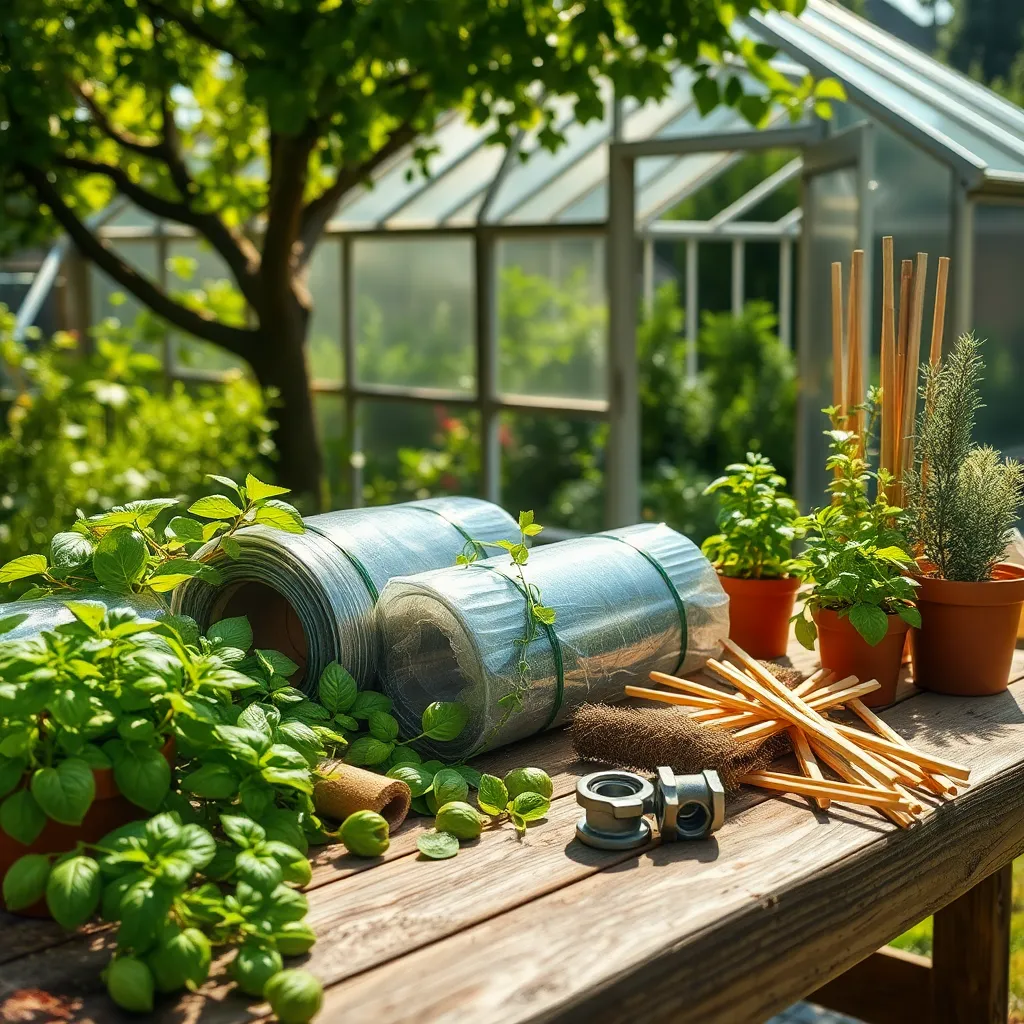
Before you start building your greenhouse, it’s crucial to gather all the necessary materials to ensure a smooth construction process. Begin by selecting the right structural materials, such as wood, aluminum, or PVC, each offering different benefits like durability or cost-effectiveness.
Consider purchasing clear polycarbonate panels or polyethylene film for the covering, as these materials provide excellent insulation and light transmission. For gardeners aiming for a more advanced setup, glass panels can offer superior clarity but require sturdier framing and more careful installation.
Having the right tools is just as important as the materials themselves. Essential tools include a drill, a saw, and a level, all of which will help you construct a stable and precise structure.
Don’t forget to stock up on additional supplies like screws, brackets, and hinges, which are vital for securing the greenhouse framework. For those looking to enhance their greenhouse’s functionality, consider installing a ventilation system or automatic watering setup to maintain optimal growing conditions with minimal effort.
Construct the Greenhouse Frame
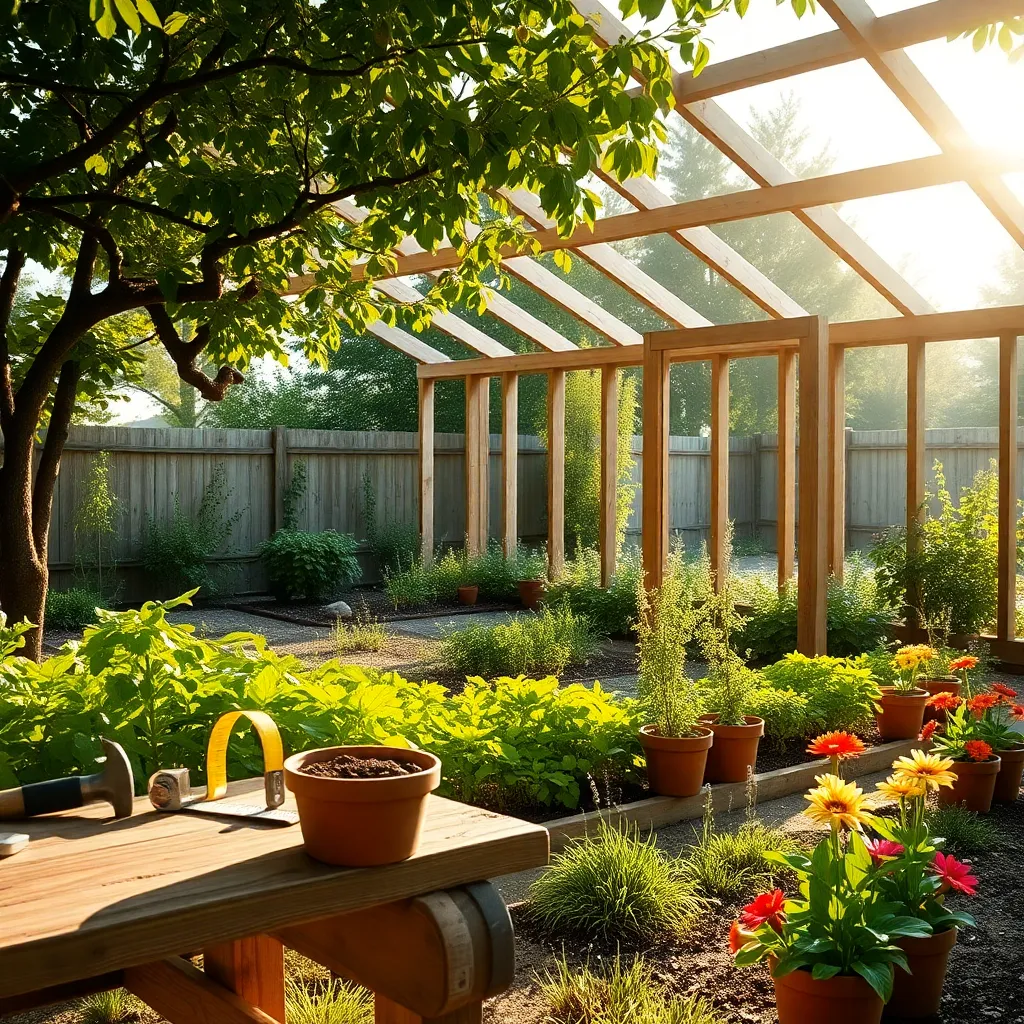
Once you have gathered all the necessary materials, it’s time to start constructing the greenhouse frame. Begin by laying out the foundation using treated wood or metal to ensure durability. Make sure the base is level before proceeding, as this will affect the stability of the entire structure.
Use a spirit level to check the evenness of your foundation, adjusting as needed to achieve a perfectly flat surface. Next, assemble the frame using galvanized metal pipes or sturdy wooden beams. These materials are resistant to rust and rot, ensuring your greenhouse can withstand the elements.
For a beginner-friendly approach, consider using PVC pipes, which are lightweight and easy to handle. Experienced builders might opt for aluminum framing for its strength and long-lasting properties. Securely connect the frame pieces using screws or connectors, ensuring each joint is tight to prevent movement.
It’s important to anchor your greenhouse securely to the ground to prevent wind damage. Use metal stakes or ground anchors, driving them deep into the soil for extra stability. Once the frame is complete, double-check its alignment and sturdiness, making adjustments as necessary before moving on to the next step.
Install the Covering Material
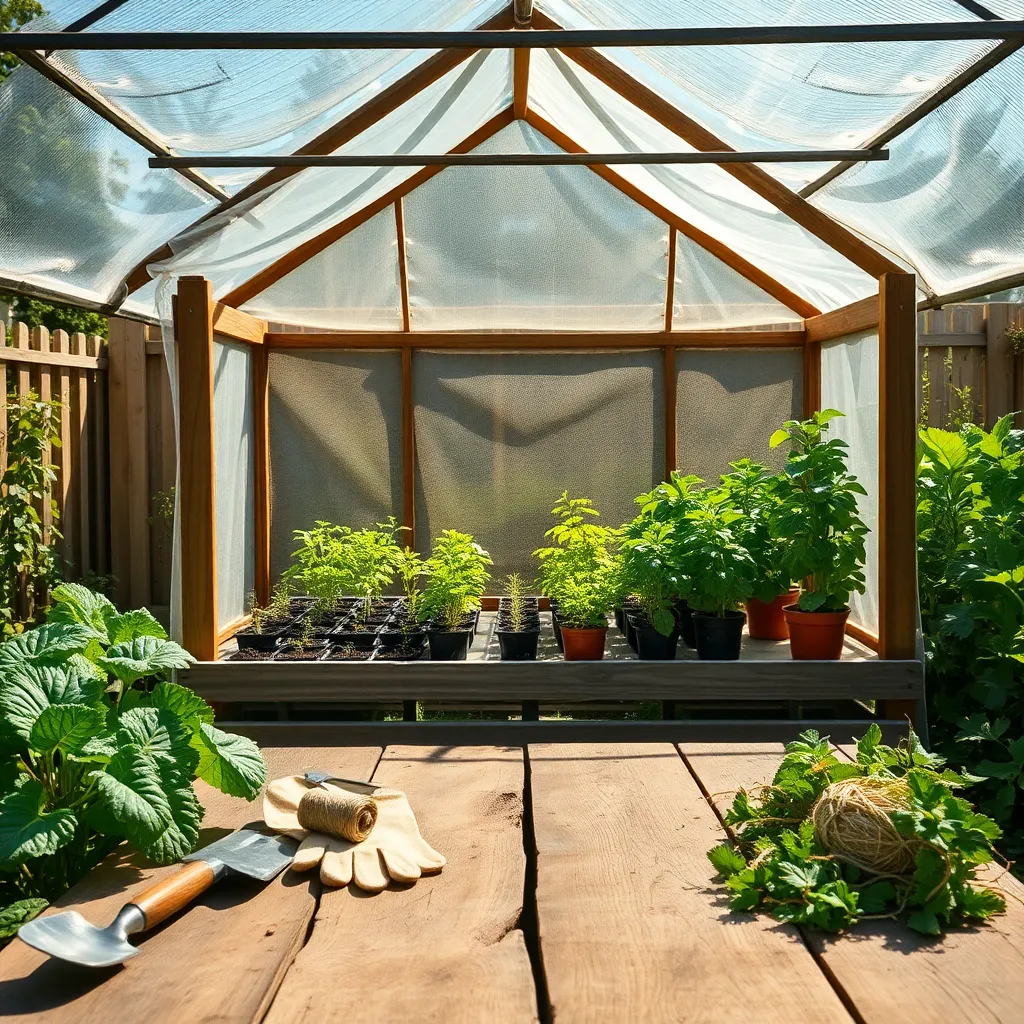
Once the greenhouse frame is built, it’s time to cover it with the right material to protect your plants. Polyethylene film is a popular choice due to its affordability and ability to retain heat effectively.
For those seeking durability and better insulation, consider using polycarbonate panels. These panels not only last longer but also provide a more stable temperature environment for your plants.
Ensure that the covering material is tightly secured to the frame to prevent heat loss and to withstand wind. Use clips or fasteners specifically designed for greenhouse materials to avoid damage during installation.
When installing the covering, start from the top and work your way down to minimize wrinkles and sagging. This approach helps in maintaining a uniform tension across the surface, ensuring maximum efficiency in heat retention.
For beginners, it’s important to remember that a well-covered greenhouse can significantly extend your growing season. Regularly check the covering for any tears or damage, as small issues can lead to heat loss and affect plant growth.
Advanced gardeners might want to invest in additional thermal screens or shading materials. These can be easily adjusted to manage light levels and prevent overheating during peak sun hours.
Set Up Ventilation System
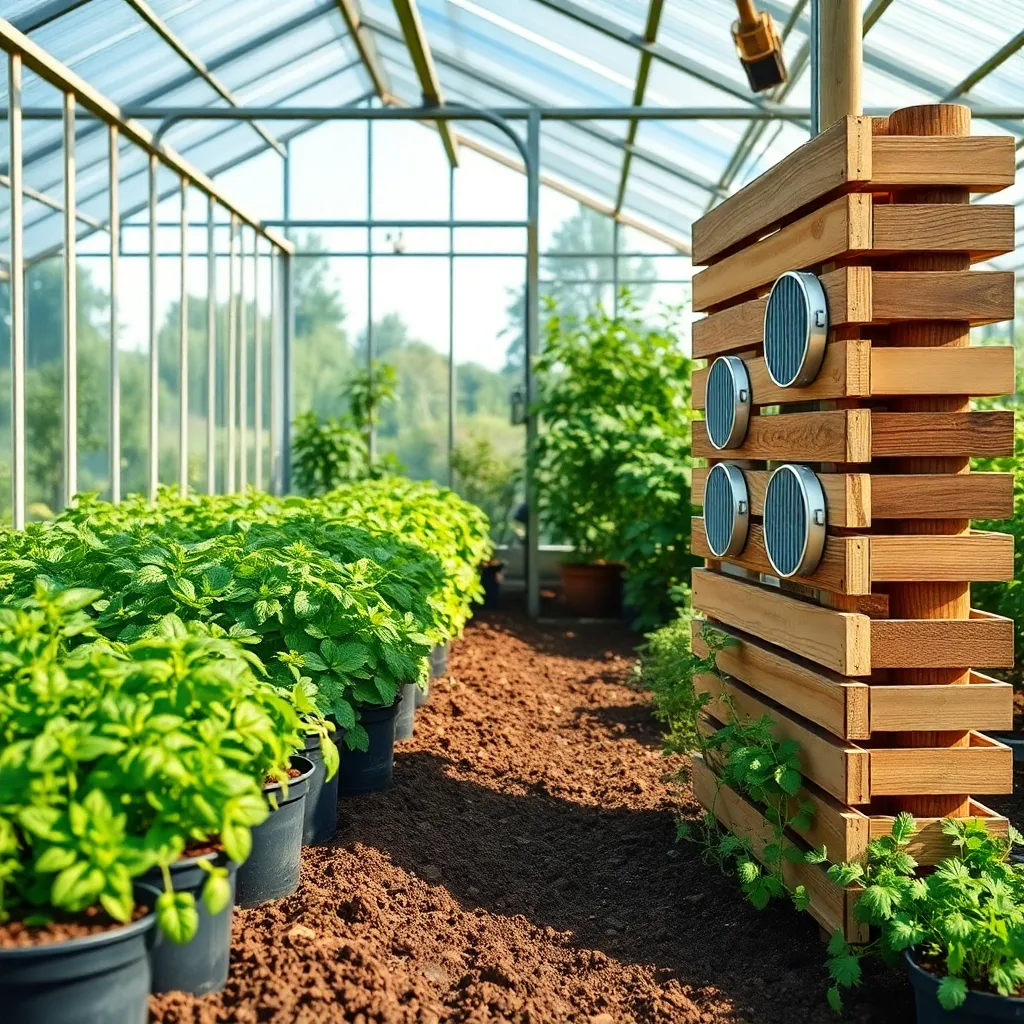
Proper ventilation in your greenhouse is crucial for maintaining optimal growing conditions. Air circulation helps regulate temperature and humidity, preventing diseases and encouraging healthy plant growth.
Start by installing roof vents, which are essential for releasing hot air that accumulates at the top. These vents can be operated manually or automatically, with automatic options being more convenient for maintaining a consistent environment.
In addition to roof vents, side vents or louvered windows are effective for enhancing airflow. When opened, these features allow cooler air to enter, creating a natural circulation pattern that keeps plants healthy.
For larger greenhouses, consider installing exhaust fans, which actively pull stale air out. Position these fans opposite intake vents to ensure a steady, refreshing breeze reaches all areas of the greenhouse.
Finally, use oscillating fans inside to improve air movement around your plants. These fans help strengthen plant stems and reduce the risk of fungal diseases by preventing stagnant air.
Conclusion: Growing Success with These Plants
In exploring “How to Make Your Own Greenhouse,” we’ve delved into five essential relationship concepts: nurturing a strong foundation, fostering open communication, embracing mutual growth, cultivating patience, and celebrating shared successes. Just as a greenhouse provides the optimal environment for plants to thrive, these principles create a nurturing space for relationships to flourish.
An actionable step you can take right now is to set aside a dedicated time each week to connect with your partner or loved ones, focusing on honest dialogue and shared goals. This small but significant commitment can yield profound growth over time.
To ensure you have these invaluable tips at your fingertips, be sure to save or bookmark this article. Having this resource ready can serve as a gentle reminder of the steps needed to cultivate a thriving relationship.
Looking ahead, remember that relationship success is a journey, not a destination. By consistently applying these principles, you’re not only enhancing your current relationships but also laying the groundwork for a future filled with connection and harmony. Embrace the journey, and watch your relationships blossom.
